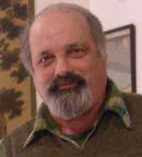Monday, June 21, 2010
International Symposium on Paleoanthropology in Commemoration of the 20th Anniversary of the Discovery of the Skulls of Yunxian Man
I attended an international conference celebrating the 20th anniversary of the discovery of “Yunxian Man” held in China from June 14-17. “Yunxian Man” is known from two complete crania (skulls without the lower jaw) found and excavated between June 1989 and June 1990 in the central Chinese province of Hubei. It was announced at the conference, held in Yunxian City, that the skulls have been re-dated to nearly 1.0 million years ago by Chinese scientists.
At the Conference I compared the new age attributed to “Yunxian Man” with the 1.0 million year old date given to a previously unknown human mitochondrial DNA (MtDNA) lineage announced earlier this year by German scientists at the Max Planck Institute for Evolutionary Anthropology in Leipzig. The team, led by Johannes Krause and Svante Pääbo, sequenced ancient mitochondrial DNA from a finger bone of a hominin found in Denisova Cave in southern Siberia. While the specimen comes from a population that lived about 30,000 to 48,000 years ago in the Altai Mountains in Central Asia a detailed analysis of the Denisova mitochondrial genome shows that it shared a common ancestor with modern humans and Neanderthals about 1.0 million years ago. Other recent research at the same Institute provides evidence that modern and archaic humans (including Neanderthals) had interbred on first contact.
Prof. Li Tianyuan, the principal investigator of “Yunxian Man,” and I gave papers at the Chinese symposium detailing how the Yunxian skulls exhibit a mix of features seen in both Homo erectus and H. heidelbergenis. H. heidelbergenis is thought by many scientists to be the common ancestor of both Neanderthal Man and modern humans. I proposed that given its age and physical features “Yunxian Man” is an ideal candidate for the 1.0 million year old common ancestor of H. heidelbergenis and the Denisova hominin. This would place the origins of H. heidelbergenis in Asia rather than Africa as previously thought.
Dr. Wu Xinzhi, the dean of Chinese paleoanthropologists, who chaired the meeting, gave a paper in which he presented evidence of Neanderthal-like traits in later human fossils from China, suggesting that Neanderthals, known to have lived near Denisova Cave, spread south into China interbreeding with indigenous Chinese hominins. This supports the idea that human evolution has been characterized by a complex web of interactions between multiple incipient human lineages that hybridized with one another on first contact, spurring the evolutionary events that led to the emergence of modern H. sapiens and other hominin species.
In keeping with these new developments I proposed a “Multiple Dispersal” model for human evolution more in keeping with recent genetic evidence than the earlier Multi-regional or Out of Africa Replacement models. In the Multiple Dispersal model humans evolved into distinct species after leaving Africa nearly 2.0 million years ago. Some of these species subsequently spread into adjacent regions hybridizing with the hominins they encountered. The westward dispersal of Yunxian Man’s descendents eventually gave rise to archaic humans in Europe (H. heidelergensis) and Africa (H. rhodesiensis), which then evolved respectively into the Eurasian Neanderthals (H. neanderthalensis) and the African ancestors of modern H. sapiens. New genetic evidence suggests that modern humans then spread out of Africa 60,000 years ago meeting up and hybridizing with Neanderthals in the Near East and the archaic descendents of H. yunxianensis in East Asia.
Other papers presented at the conference discussed evidence for an early appearance of modern H. sapiens in China. Dr. Shen Guanjun, who has re-dated many Chinese hominin sites using advanced radiometric techniques, said that a number of Chinese sites yielding modern human teeth were older than 100,000 years in age, tens of thousands of years before they are supposed to be there according to the Out of Africa theory of modern human origins. In a following paper Dr. Liu Wu showed how these teeth had typical East Asian features still seen in today’s Asian populations. I proposed that this evidence supported the likelihood of an early dispersal of modern humans out of Africa which hybridized with local archaic Chinese. A second wave of moderns coming out of Africa reached China around 45,000 years ago They then mixed with the earlier hybridized Asians giving rise to the Asian populations of today. Similar patterns most likely also occurred in Europe and elsewhere, lending further support to a Multiple Dispersal model for human evolution.
